Featured image: “Kissing the shuttle” was the process by which weavers sucked thread through the eye of a shuttle when the pirn (bobbin) was replaced.
The Kiss of Death Story
The following article is from The Kiss of Death Story by Horatio Rogers, M.D., for Old Time New England, Volume LXI, #2, Fall 1970.
“A person of a historical turn of mind living in the Merrimack Valley can hardly escape becoming interested in the early days of the textile industry, which once flourished here. Among the fascinating details bound to come to his attention is the story of the “kiss of death” shuttle. Since the Middle Ages, a boat-shaped object called a shuttle has been used to carry the weft thread across the loom in the process of weaving cloth. This shuttle contained a hollow space for holding the spool of weft thread and a hole or “eye” through which the loose end of the thread emerged.
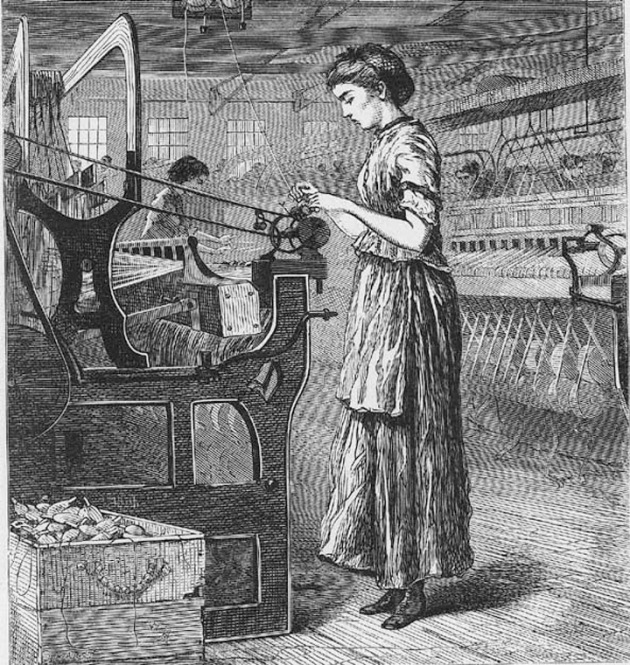
The weaver, after loading a new pirn wrapped with thread into a shuttle, drew the loose end through the hole with the breath. No one would object to this unsanitary habit so long as weaving took place only in the weaver’s home. Even later on, when professional weavers were brought together in “manufactories” and later still in the weave rooms of textile mills, no one saw reason to object.
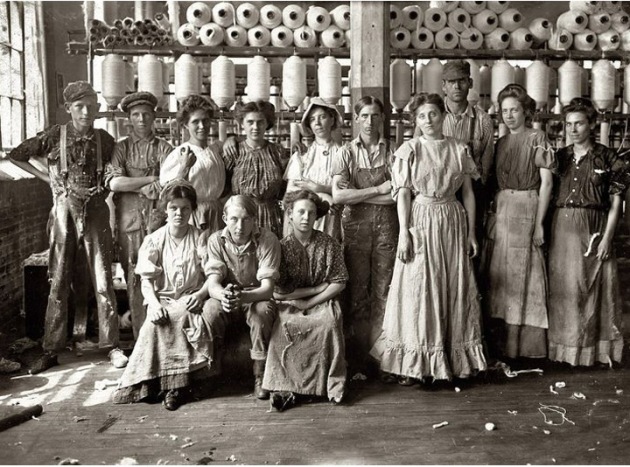
Certainly, no one connected this habit with the observation, made sometime in the nineteenth century, that weavers were dying of what was then called consumption at a higher rate than the general public. In 1882, the German bacteriologist Robert Koch succeeded in isolating the tubercle bacillus from the sputum of consumptive patients. Tuberculosis became known as “the Great White Plague.” Popular campaigns complete with exhibits were staged against it by Public Health agencies, even in small towns.
The photo above is provided by the New England Historical Society. Lewis Hine took this photo in April 1909 of a young worker at Interlaken Mill, Arkwright, R.I.
At about this time, observers remembered the weavers’ habit of sucking the thread end through the shuttle and realized that by contaminating a number of shuttles, a single tuberculous weaver could infect a whole weave room. Owners and superintendents of textile mills quickly made rules against the old practice of sucking through. As might be expected, they were largely ignored. In some mills, each weaver was provided with a small metal hook with which to pull the weft end through the shuttle eye. Weavers still preferred the “good old way.”
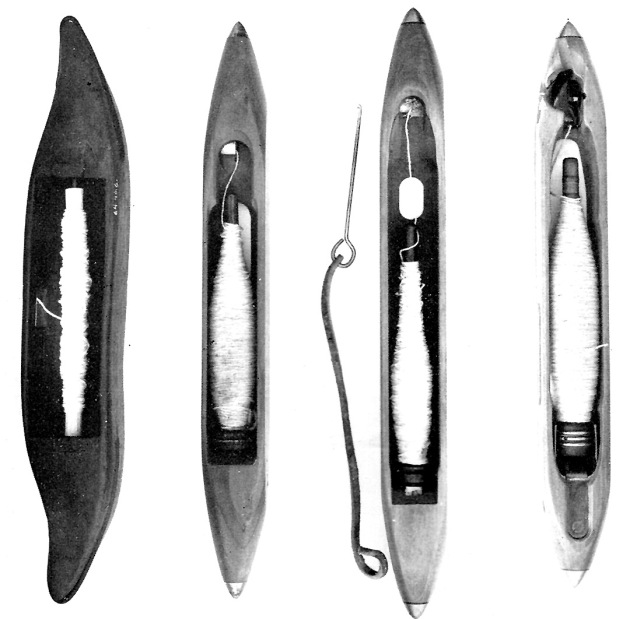
Massachusetts passed Chapter 281 of the Acts of 1911, making the use of the kiss of death shuttle unlawful.
Section I. It shall be unlawful for any proprietor of a factory or any officer, agent, or other person to require or permit the use of suction shuttles, or any form of shuttle in the use of which any part of the shuttle or any thread is put in the mouth or touched by the lips of the operator. It shall be the duty of the State Board of Labor and Industries to enforce the provisions of this act.
Section 2. Violations of this act shall be punished by a fine of not less than fifty dollars for each offense.
It was not until the introduction of the self-threading shuttle that the problem was finally solved. Modern looms now reload the empty shuttle automatically, and modern shuttles re-thread themselves. The “Kiss of Death” shuttle had its day, and took its place with the vast company of solved problems which mark the progress of textile history from the earliest times.”
The Toll of Tuberculosis
An estimated 110,000 Americans died each year from tuberculosis in the 1900s. In 1921, the publication “Textile World” announced a campaign to reduce tuberculosis among factory workers, and included shocking statistics in the United States Department of Labor report, ” Causes of Death by Occupation,” before the age of 35.
Male textile workers: 2,390 deaths in textile mills. 525 died from tuberculosis. In other words, 22 percent of deaths among male textile workers are due to tuberculosis. 47 percent of deaths in the age period 25 to 34 years are from tuberculosis.
Female textile workers: (In the study group of workers who died before age 35), the average at death is 33.9 years, while the age at death of those dying from tuberculosis is 26.7. Thirty-six percent of all deaths among female textile workers are due to tuberculosis. Among these, 50 percent of all deaths at age 15 to 24 are due to tuberculosis. At the ages of 25 to 34, 49 percent of deaths are from tuberculosis.”
Further reading:
- The Kiss of Death Story, Horation Rogers, M.D., for Old Time New England Volume LXI, #2, Fall 1970.
- Stop Kissing and Steaming!’: Tuberculosis and the Occupational Health Movement in the Massachusetts and Lancashire Cotton Weaving Industries, 1870–1918
- Dark Satanic Mills by Diamond Environmental
- Annual Reports of the Boston Tuberculosis Association
- Ipswich Mills and Brown Stocking Mills
- Ipswich Hosiery
- The Ipswich Hosiery Industry
- Ipswich Mills and Factories
- Fine Thread, Lace, and Hosiery
- The Ipswich Mills Strike, 1913
The Lowell Offering
The Lowell Offering was a monthly periodical, first published in 1840, which featured poetry and fiction by female workers at textile mills in Lowell, MA. Known as the Lowell Mill Girls, they often wrote about situations in their own lives, including labor unrest in the factories. The Offering ceased publication in 1844 but was revived from 1848 to 1850 as the New England Offering with contributions from working women throughout New England.
- The Lowell Offering: Writings by New England Mill Women (1840-1945)
- Loom and Spindle: Or, Life among the Early Mill Girls; with a Sketch of “The Lowell Offering” and some of Its Contributors
Related Posts
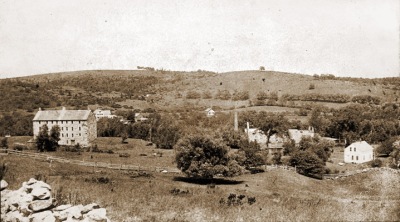 The Willowdale Mill - In 1829, Dr. Thomas Manning of Ipswich constructed a 6' tall dam and mill on the Ipswich River along Topsfield Rd. Workers were provided housing a the large stone house. In 1884 the mill building burned and much of the stone walls for the mill building collapsed. … Continue reading The Willowdale Mill
The Willowdale Mill - In 1829, Dr. Thomas Manning of Ipswich constructed a 6' tall dam and mill on the Ipswich River along Topsfield Rd. Workers were provided housing a the large stone house. In 1884 the mill building burned and much of the stone walls for the mill building collapsed. … Continue reading The Willowdale Mill  The Proximity Fuze: How Ipswich women helped win WW II - The former Ipswich Mills, now owned by EBSCO, was the site of one of the most closely guarded secrets of the Second World War.… Continue reading The Proximity Fuze: How Ipswich women helped win WW II
The Proximity Fuze: How Ipswich women helped win WW II - The former Ipswich Mills, now owned by EBSCO, was the site of one of the most closely guarded secrets of the Second World War.… Continue reading The Proximity Fuze: How Ipswich women helped win WW II 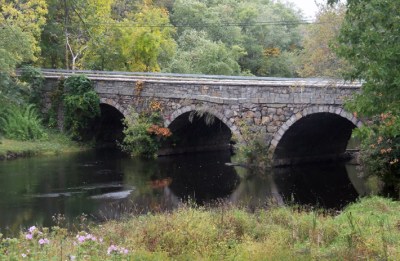 The Mill Road Bridge and the Isinglass Factory - The triple stone arch Warner Bridge that connects Mill Rd. in Ipswich to Highland St. in Hamilton was constructed in 1829, and rebuilt in 1856. The isinglass mill sat on the downstream Ipswich side of the bridge.… Continue reading The Mill Road Bridge and the Isinglass Factory
The Mill Road Bridge and the Isinglass Factory - The triple stone arch Warner Bridge that connects Mill Rd. in Ipswich to Highland St. in Hamilton was constructed in 1829, and rebuilt in 1856. The isinglass mill sat on the downstream Ipswich side of the bridge.… Continue reading The Mill Road Bridge and the Isinglass Factory 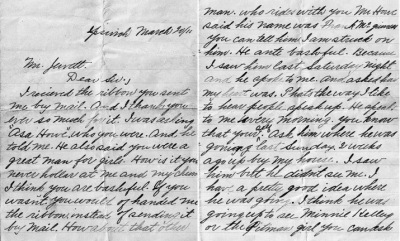 The Mill girl’s Letter: “I Can Make You Blush.” -
The Mill girl’s Letter: “I Can Make You Blush.” -
Dear Sir,
I received the ribbon you sent me by mail, and I thank you ever so much for it. I was asking Asa Howe who you were, and he told me. He also said you were a great man for girls. How is it you never holler at me and my chums? I think you're bashful. If you wasn't, you would of handed me the ribbon instead of sending it by mail.
… Continue reading The Mill girl’s Letter: “I Can Make You Blush.”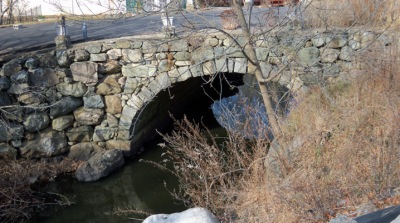 The Jewel Mill and Stone Arch Bridge - In 1642, a dam and fulling mill were built on the Mill River in Rowley. The stone arch bridge on this property was constructed between 1850 and 1870.… Continue reading The Jewel Mill and Stone Arch Bridge
The Jewel Mill and Stone Arch Bridge - In 1642, a dam and fulling mill were built on the Mill River in Rowley. The stone arch bridge on this property was constructed between 1850 and 1870.… Continue reading The Jewel Mill and Stone Arch Bridge 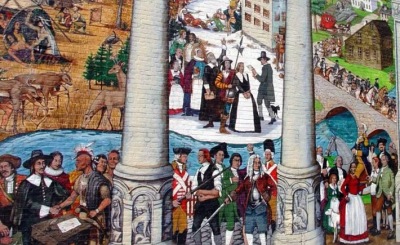 The Ipswich Riverwalk Mural - In 2005 EBSCO Publishing commissioned artist Alan Pearsall to paint a 2,700-square-foot mural on one of the old mill buildings occupied by the company in Ipswich. The mural is the centerpiece of the town's Riverwalk. … Continue reading The Ipswich Riverwalk Mural
The Ipswich Riverwalk Mural - In 2005 EBSCO Publishing commissioned artist Alan Pearsall to paint a 2,700-square-foot mural on one of the old mill buildings occupied by the company in Ipswich. The mural is the centerpiece of the town's Riverwalk. … Continue reading The Ipswich Riverwalk Mural 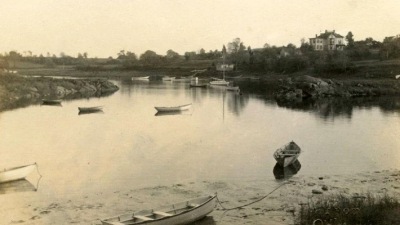 The Ipswich River - The 35-mile Ipswich River flows into the Atlantic Ocean at Ipswich Bay. The Ipswich River Water Association works to protect the river and its watershed. Foote Brothers Canoes on Topsfield Rd provides rentals and shuttle service from April to October.… Continue reading The Ipswich River
The Ipswich River - The 35-mile Ipswich River flows into the Atlantic Ocean at Ipswich Bay. The Ipswich River Water Association works to protect the river and its watershed. Foote Brothers Canoes on Topsfield Rd provides rentals and shuttle service from April to October.… Continue reading The Ipswich River 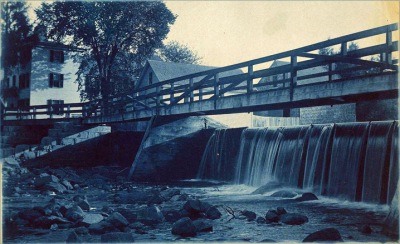 The History of the Ipswich Mill Dam, and a Natural History of the Ipswich River - We measure history by time, but for the Ipswich River and its alewives, time could be running out. We can help preserve the human and natural history of the Ipswich River by freeing it from its man-made encumbrances.… Continue reading The History of the Ipswich Mill Dam, and a Natural History of the Ipswich River
The History of the Ipswich Mill Dam, and a Natural History of the Ipswich River - We measure history by time, but for the Ipswich River and its alewives, time could be running out. We can help preserve the human and natural history of the Ipswich River by freeing it from its man-made encumbrances.… Continue reading The History of the Ipswich Mill Dam, and a Natural History of the Ipswich River 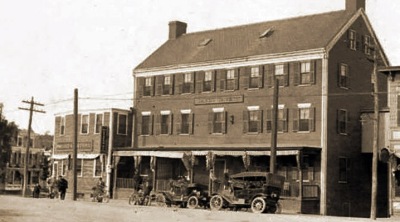 The Hayes Hotel - The Hayes Hotel was constructed in 1842 as a woolen goods factory. Converted to a tavern and hotel in 1885, the building was being used as a rooming house when it burned in 1969 with a loss of life.… Continue reading The Hayes Hotel
The Hayes Hotel - The Hayes Hotel was constructed in 1842 as a woolen goods factory. Converted to a tavern and hotel in 1885, the building was being used as a rooming house when it burned in 1969 with a loss of life.… Continue reading The Hayes Hotel  The Greek Hotel - In 1868, the Ipswich Mills built a "fine mansion" for the use of its superintendent. By 1910 the building had become a tenement upstairs and coffee shop downstairs. The house was replaced by a succession of three diners, but the lot is now a parking lot.… Continue reading The Greek Hotel
The Greek Hotel - In 1868, the Ipswich Mills built a "fine mansion" for the use of its superintendent. By 1910 the building had become a tenement upstairs and coffee shop downstairs. The house was replaced by a succession of three diners, but the lot is now a parking lot.… Continue reading The Greek Hotel 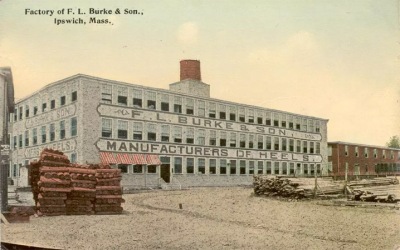 The Burke Heel Factory and Canney Lumber Fire, June 19, 1933 - The factory at Brown Square burned after volatile glues burst into flames. In the adjoining lot was the Canney Lumber Co. where the building lumber were destroyed. The smaller brick building on the right survived and is now the Ipswich Ale Brewery.… Continue reading The Burke Heel Factory and Canney Lumber Fire, June 19, 1933
The Burke Heel Factory and Canney Lumber Fire, June 19, 1933 - The factory at Brown Square burned after volatile glues burst into flames. In the adjoining lot was the Canney Lumber Co. where the building lumber were destroyed. The smaller brick building on the right survived and is now the Ipswich Ale Brewery.… Continue reading The Burke Heel Factory and Canney Lumber Fire, June 19, 1933 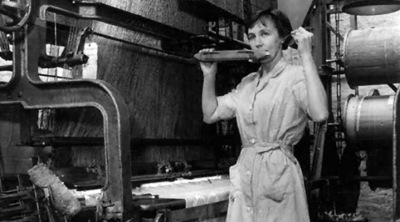 The “Kiss of Death” at New England Textile Mills - The weaver, after loading thread into a shuttle, drew the loose end through the hole with her breath. No one connected this habit with the observation that weavers were dying of consumption, known now as tuberculosis.… Continue reading The “Kiss of Death” at New England Textile Mills
The “Kiss of Death” at New England Textile Mills - The weaver, after loading thread into a shuttle, drew the loose end through the hole with her breath. No one connected this habit with the observation that weavers were dying of consumption, known now as tuberculosis.… Continue reading The “Kiss of Death” at New England Textile Mills 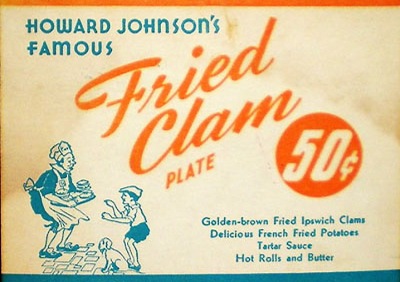 Soffron Brothers Ipswich Clams - Soffron Brothers were the exclusive suppliers of clams to the Howard Johnson chain for 32 years, which featured Ipswich Fried Clams on the menu. The four brothers, Tom, George, Pete and Steve, were the children of Greek immigrants who came to work at the Ipswich mills. Their Ipswich factory was at Brown Square in the building that now houses the Ipswich Ale Brewery.… Continue reading Soffron Brothers Ipswich Clams
Soffron Brothers Ipswich Clams - Soffron Brothers were the exclusive suppliers of clams to the Howard Johnson chain for 32 years, which featured Ipswich Fried Clams on the menu. The four brothers, Tom, George, Pete and Steve, were the children of Greek immigrants who came to work at the Ipswich mills. Their Ipswich factory was at Brown Square in the building that now houses the Ipswich Ale Brewery.… Continue reading Soffron Brothers Ipswich Clams 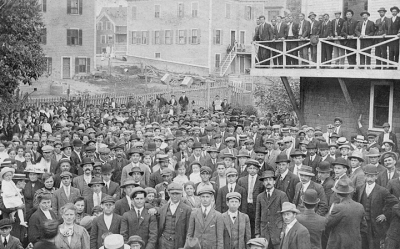 Police Open Fire at the Ipswich Mills Strike, June 10, 1913 - On June 10, 1913, police fired into a crowd of protesting immigrant workers at the Ipswich hosiery mill. A young Greek woman named Nicholetta Paudelopoulou was shot in the head and killed by police. … Continue reading Police Open Fire at the Ipswich Mills Strike, June 10, 1913
Police Open Fire at the Ipswich Mills Strike, June 10, 1913 - On June 10, 1913, police fired into a crowd of protesting immigrant workers at the Ipswich hosiery mill. A young Greek woman named Nicholetta Paudelopoulou was shot in the head and killed by police. … Continue reading Police Open Fire at the Ipswich Mills Strike, June 10, 1913  Pemberton Mill in Lawrence Collapses and Burns, Killing Workers; January 10, 1860 - The collapse of the Pemberton Mill in Lawrence is the worst industrial accident in Massachusetts history. On Tuesday afternoon January 10, 1860, hundreds of men, women, and children were buried alive in the ruins.… Continue reading Pemberton Mill in Lawrence Collapses and Burns, Killing Workers; January 10, 1860
Pemberton Mill in Lawrence Collapses and Burns, Killing Workers; January 10, 1860 - The collapse of the Pemberton Mill in Lawrence is the worst industrial accident in Massachusetts history. On Tuesday afternoon January 10, 1860, hundreds of men, women, and children were buried alive in the ruins.… Continue reading Pemberton Mill in Lawrence Collapses and Burns, Killing Workers; January 10, 1860  No “Bait and Switch” - Photo by David “Stoney” Stone Letter: The headline “Bait and Switch” in the November 25 article about the Ipswich Mills Dam was eye-catching but very misleading. Read this article at the Ipswich Local News.
No “Bait and Switch” - Photo by David “Stoney” Stone Letter: The headline “Bait and Switch” in the November 25 article about the Ipswich Mills Dam was eye-catching but very misleading. Read this article at the Ipswich Local News.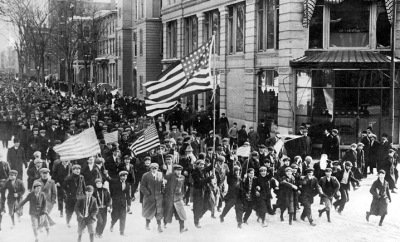 January 12, 1912: Lawrence Bread and Roses strike - On January 12, 1912, the labor protest later known as the "Bread and Roses" strike began in Lawrence, MA. Violent methods were used to suppress the protest, but the strikers maintained their solidarity.… Continue reading January 12, 1912: Lawrence Bread and Roses strike
January 12, 1912: Lawrence Bread and Roses strike - On January 12, 1912, the labor protest later known as the "Bread and Roses" strike began in Lawrence, MA. Violent methods were used to suppress the protest, but the strikers maintained their solidarity.… Continue reading January 12, 1912: Lawrence Bread and Roses strike 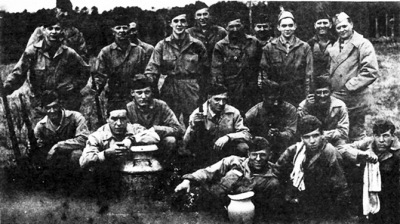 Ipswich in the World Wars - The end to the Great Depression coincided with America's entry into World War II. The Ipswich Guard was stationed on Old England Rd., and Sylvania employees worked on a top-secret project. Minesweepers and other small craft were produced at Robinson's Boatyard. … Continue reading Ipswich in the World Wars
Ipswich in the World Wars - The end to the Great Depression coincided with America's entry into World War II. The Ipswich Guard was stationed on Old England Rd., and Sylvania employees worked on a top-secret project. Minesweepers and other small craft were produced at Robinson's Boatyard. … Continue reading Ipswich in the World Wars  Historic Survey of the Ipswich Mills Dam - Inventory No: IPS.9009: Ipswich Mills Hosiery Manufacturing Company Dam. Survey Form F (structure) submitted to the Massachusetts Historical Commission, Recorded by: Ted Dattilo for the Public Archaeology Laboratory, Inc., May 2024. Received by the Mass. Historical Commission on Nov. 12, 2024 Historical Narrative: The history of the dam and how it relates to the development… Continue reading Historic Survey of the Ipswich Mills Dam
Historic Survey of the Ipswich Mills Dam - Inventory No: IPS.9009: Ipswich Mills Hosiery Manufacturing Company Dam. Survey Form F (structure) submitted to the Massachusetts Historical Commission, Recorded by: Ted Dattilo for the Public Archaeology Laboratory, Inc., May 2024. Received by the Mass. Historical Commission on Nov. 12, 2024 Historical Narrative: The history of the dam and how it relates to the development… Continue reading Historic Survey of the Ipswich Mills Dam 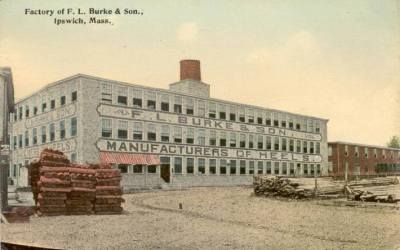 Hammatt Street, Brown Square and Farley Brook - Until the second half of the 19th Century, much of the area bounded by Central Street, Washington Street, Mineral Street and Market Street was a wetland with an open sewer known as Farley Brook running through it.… Continue reading Hammatt Street, Brown Square and Farley Brook
Hammatt Street, Brown Square and Farley Brook - Until the second half of the 19th Century, much of the area bounded by Central Street, Washington Street, Mineral Street and Market Street was a wetland with an open sewer known as Farley Brook running through it.… Continue reading Hammatt Street, Brown Square and Farley Brook 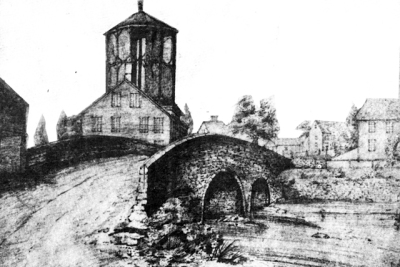 Dr. Manning’s Windmill - In 1792, Dr. John Manning erected a factory at the corner of South Main and Market Street beside the Choate Bridge and began manufacturing cloth and blankets. On the roof squatted a great octagonal tower, inside of which was a horizontal windmill.… Continue reading Dr. Manning’s Windmill
Dr. Manning’s Windmill - In 1792, Dr. John Manning erected a factory at the corner of South Main and Market Street beside the Choate Bridge and began manufacturing cloth and blankets. On the roof squatted a great octagonal tower, inside of which was a horizontal windmill.… Continue reading Dr. Manning’s Windmill  County Street, Sawmill Point, and Bare Hills - The town voted in 1861 to build County Street and its stone arch bridge, connecting Cross and Mill Streets. A Woolen mill, saw mill, blacksmith shop and veneer mill operated near the bridge.… Continue reading County Street, Sawmill Point, and Bare Hills
County Street, Sawmill Point, and Bare Hills - The town voted in 1861 to build County Street and its stone arch bridge, connecting Cross and Mill Streets. A Woolen mill, saw mill, blacksmith shop and veneer mill operated near the bridge.… Continue reading County Street, Sawmill Point, and Bare Hills  A Town of Immigrants - Puritans founded Ipswich during the “Great Migration” of the early 17th Century. Many residents of the town descend from immigrants who arrived in the late 19th and early 20th centuries to work in the mills.… Continue reading A Town of Immigrants
A Town of Immigrants - Puritans founded Ipswich during the “Great Migration” of the early 17th Century. Many residents of the town descend from immigrants who arrived in the late 19th and early 20th centuries to work in the mills.… Continue reading A Town of Immigrants 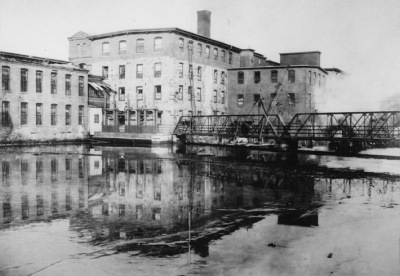 A Photographic History of the Ipswich Mills Dam - Geologically, the Ipswich River is quite young. The Laurentide ice sheet during the most recent ice age receded to the northern border of Massachusetts around 14,000 years ago. As the ice sheet melted, the sea level rose about 100 ft. higher than current levels, putting much of the North Shore area temporarily under water until… Continue reading A Photographic History of the Ipswich Mills Dam
A Photographic History of the Ipswich Mills Dam - Geologically, the Ipswich River is quite young. The Laurentide ice sheet during the most recent ice age receded to the northern border of Massachusetts around 14,000 years ago. As the ice sheet melted, the sea level rose about 100 ft. higher than current levels, putting much of the North Shore area temporarily under water until… Continue reading A Photographic History of the Ipswich Mills Dam 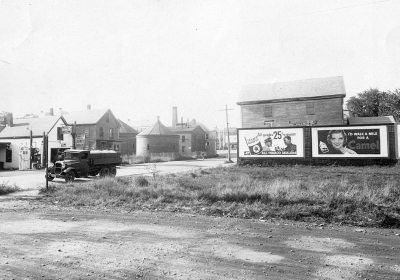 A Chronology of Ipswich Public Works: Telegraph, Telephone, Gas, Water, Electricity, Trash, Sewer, Wind and Solar - The history of public utilities in Ipswich starting in 1847. Downtown fires in 1894 prompted construction of the water and electrical systems. Today the Ipswich Electric Department promotes and utilizes renewable energy sources.… Continue reading A Chronology of Ipswich Public Works: Telegraph, Telephone, Gas, Water, Electricity, Trash, Sewer, Wind and Solar
A Chronology of Ipswich Public Works: Telegraph, Telephone, Gas, Water, Electricity, Trash, Sewer, Wind and Solar - The history of public utilities in Ipswich starting in 1847. Downtown fires in 1894 prompted construction of the water and electrical systems. Today the Ipswich Electric Department promotes and utilizes renewable energy sources.… Continue reading A Chronology of Ipswich Public Works: Telegraph, Telephone, Gas, Water, Electricity, Trash, Sewer, Wind and Solar 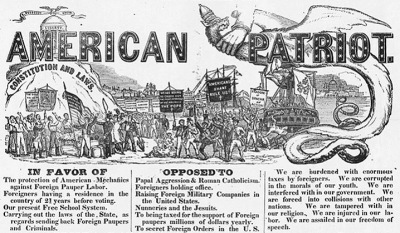 1854: Anti-immigrant Know Nothing Party Sweeps Massachusetts Elections - Prejudice disguised as patriotism repeats itself in American politics. In 1854, the "Know Nothing" American Party formed in opposition to Irish immigration and carried local elections in New England communities. They swept the state of Massachusetts in the fall 1854 elections but were defeated two years later.… Continue reading 1854: Anti-immigrant Know Nothing Party Sweeps Massachusetts Elections
1854: Anti-immigrant Know Nothing Party Sweeps Massachusetts Elections - Prejudice disguised as patriotism repeats itself in American politics. In 1854, the "Know Nothing" American Party formed in opposition to Irish immigration and carried local elections in New England communities. They swept the state of Massachusetts in the fall 1854 elections but were defeated two years later.… Continue reading 1854: Anti-immigrant Know Nothing Party Sweeps Massachusetts Elections 
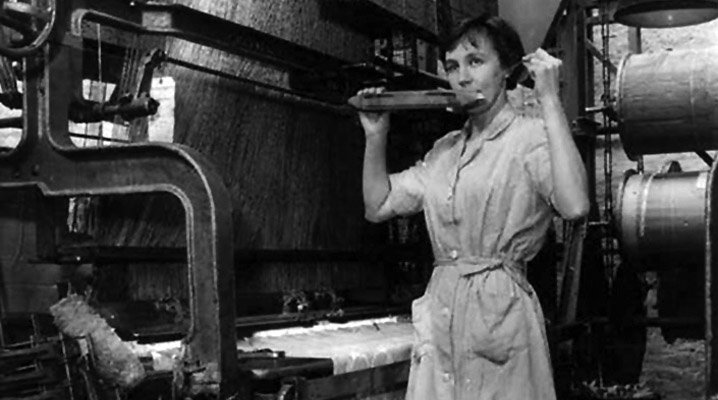
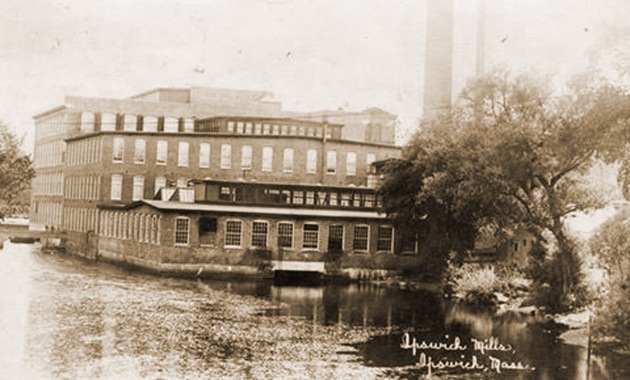
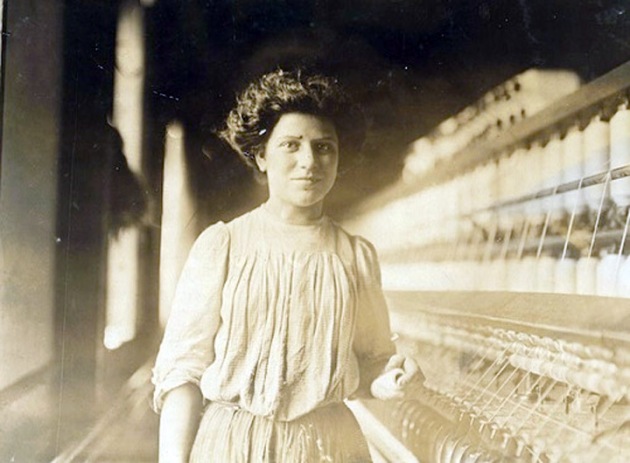

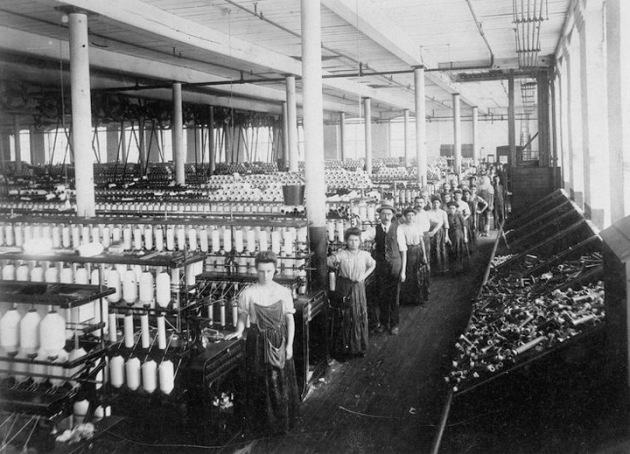
I am a handweaver and use a one type of shuttle that is similar to these mill shuttles. Ours do not have metal trips, and we load this type of shuttle with yarn on a pirn but ours has a release exit whereby the last inches of the yarn is dropped into it from above and tugged through. No breathing is needed to switch pirns/yarns quickly.
Cotton lint causes “brown lung”, the textile equivalent of miners’ “black lung”. Both can be fatal if not merely incapacitating.
My mom worked in a cotton Mill and one way to prevent this was the practice of ” dipping snuff” men and women both did this it caused one to spit regularly ironically the nicotine in snuff caused many to have cancer of mouth tongue and throat. My mom dipped until her death in 2011 . She was 86 years old.
My mother worked as a ” twister” in Philadelphia for many years and developed lung cancer from working with angel hair thread. A twister is the woman (all women in those days) who would climb up the looms to the ceiling level and catch the thread and climb down and tie it to the next spool, She would put it in her mouth as climbed down so that she could hold on.
Before ventilation and air-cleaning systems, the air in mills was full of small broken fibers shed by the machines and fanned about by their motion. It would make the workers more susceptible to TB, but in any case the fibers would block, inflame or in the case of stiff brittle flax fibers, actually puncture the alveoli, compromising lung function. Very severe in the linen mills of Northern Ireland.
I worked at Eastland Woolen Mill in maine. I strongly believe that is where I got my breast cancer from. Look at the cancer history up and down the river where a woolen mill once sat.
I have two of the shuttle with the hole at the end. Purchased them from an antique store that was cleared out 10 years after the death of the owner. Using them as décor in my sewing room.
Interesting article but it doesn’t exactly prove that the shuttle was the cause of the high incidence of TB in textile workers or that the improved shuttle solved things. TB is spread by breathing in TB germs, not by kissing or sharing utensils or the like.
There was no “kissing” involved. They are saying it was spread because the workers were breathing into the shuttle, or did I miss something?
It spreads very well by kissing, sharing unwashed utensils, and the like. It’s just most famous for air transmission.
Who would have thought??? Good article.
Good story on a sad part of history.
A very interesting story! Thank you
I knew about the fluff from cotton creating lung problems but I had no idea about shuttles. Thank you for the historical information.
As usual this was a great article that I enjoyed greatly. Thank you for sharing.